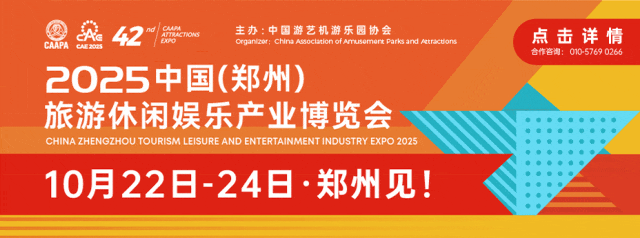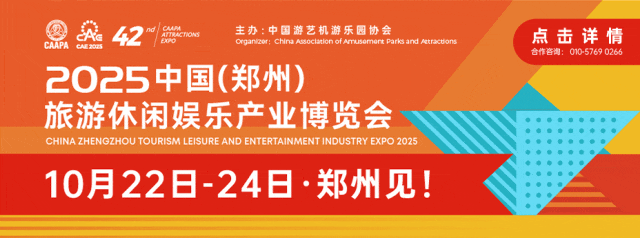
Safety management practices for large-scale amusement facilities at home and abroad!
Source:
Author:
Release time:
2025-05-26
Click to view details

Recommended Important Cultural and Tourism Events
2025 China Parent-Child Tourism Innovation and Development Forum
June 12-13, Shanghai Jinshan Crowne Plaza Hotel

Editor | Jing Xiangyuan
Introduction to the Development of Large-scale Amusement Facilities at Home and Abroad
China's amusement industry, since its inception in the 1980s, has gone from nothing to something, from small to large, from crude to refined, and from importing to exporting. It has gradually formed a relatively complete system of design, manufacturing, installation, use, and supervision. With the continuous improvement of people's living standards, the demand for entertainment and leisure activities and amusement facilities is also increasing.
China's amusement facility designs range from large roller coasters and Ferris wheels to small bumper cars, with a full range of categories and diverse varieties. By the end of 2023, there were 25,200 units (sets) of various types of large amusement facilities in mainland China (excluding Hong Kong, Macao, and Taiwan), accounting for 0.15% of the total number of special equipment in the country.
By the end of 2021, there were 120 large amusement facility companies in China that had obtained production unit licenses. From 2017 to 2021, 45 companies obtained production unit licenses, mainly distributed in 15 provinces (regions and municipalities) with relatively developed economies and manufacturing industries. The annual output value of the amusement facility design and manufacturing industry exceeds 5 billion yuan. Domestic amusement facilities have various classic forms, such as the Guangdong Jinma trackless roller coaster (see Figure 1) and the Beijing Shibao Lai magic ring roller coaster (see Figure 2).
The development of the amusement facility industry abroad has a history of more than 100 years. Since the 1950s, with the continuous advancement of science and technology and its wide application in the industrial field, the amusement facility industry has shown a rapid development trend. Amusement facility design and manufacturing companies are mainly located in industrially developed countries such as the United States, Italy, the United Kingdom, France, Germany, the Netherlands, Canada, Switzerland, and Japan.
Safety is the fundamental aspect of amusement facilities. It is necessary to ensure safety while allowing tourists to experience thrills and excitement, and to gain pleasure from these thrills and excitement. Unlike general types of equipment, amusement facilities involve public safety, with participants mainly teenagers. Minor injuries will attract widespread attention from all sectors of society, and the social impact is significant. All of this places higher demands on the design, manufacturing, installation, use, and supervision of amusement facilities.
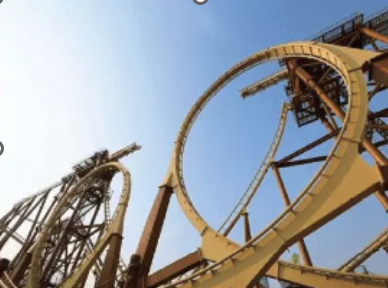
Figure 1 Guangdong Jinma trackless roller coaster diagram
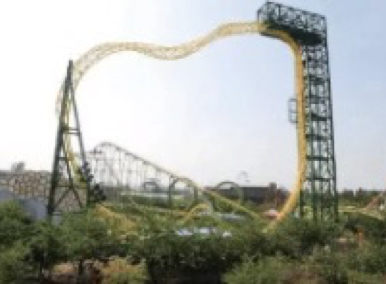
Figure 2 Beijing Shibao Lai magic ring roller coaster
Current Status of Development of Domestic and International Standards for Large-scale Amusement Facilities
(1) Current Status of Development of Domestic Standards for Large-scale Amusement Facilities
China's research work on amusement facility standards started relatively late, beginning in the mid-1970s. Relevant departments began to formulate China's first mandatory national standard for amusement facilities, namely GB 8408-1987 "Safety Standard for Amusement Machines and Amusement Facilities." Chinese amusement facility standards include basic standards, product standards, management standards, and safety standards.
(2) Current Status of Development of Foreign Standards for Large-scale Amusement Facilities
The United States, the European Union, Australia, and Canada started research on amusement facility standards earlier and have continuously revised and amended standards, making them world-leading. Stakeholders in the US amusement facility industry have played a significant role in amusement facility management, mainly through US amusement facility industry associations representing their members in coordinating industry relations, especially in the formulation and implementation of laws, regulations, and standards, as well as industry self-discipline and unified qualifications. These organizations include the American Society for Testing and Materials (ASTM), the Committee on Amusement and Recreational Facility Safety (CARES), the National Association of Amusement Ride Safety Officials (NAARSO), the International Association of Amusement Parks and Attractions (IAAPA), the Outdoor Amusement Industry Association (OABA), and the Amusement Industry Manufacturers and Suppliers Association (AIMS).
Analysis of Accidents of Large-scale Amusement Facilities at Home and Abroad
(1) Analysis of Accidents of Domestic Large-scale Amusement Facilities
1. Overall Analysis of Accidents of Domestic Large-scale Amusement Facilities
According to relevant statistics, from 2015 to 2021, a total of 34 accidents involving large amusement facilities occurred nationwide, resulting in a total of 17 deaths and 52 injuries (see Figure 3).

Figure 3 Statistics of Accidents of Domestic Large-scale Amusement Facilities from 2015 to 2021
From 2015 to 2021, there were approximately 5 accidents involving large amusement facilities per year on average. Due to the "April 6" accident in Changyuan, Henan in 2015, which resulted in 19 injuries, the number of injuries that year reached 28. The "February 13" accident in Shaoyang, Hunan in 2021 resulted in 16 injuries, while the number of injuries in other years remained relatively stable. According to the 2022 "Notice on the National Special Equipment Safety Status in 2021" issued by the State Administration for Market Regulation, the death rate per 10,000 units of special equipment was 0.08. The death rate per 10,000 units of large amusement facilities was 0.96, higher than the death rate per 10,000 units of special equipment in China.
2. Analysis of Causes of Accidents of Domestic Large-scale Amusement Facilities
As a complex type of manned electromechanical equipment, large amusement facilities can experience accidents due to failures in any link. The main accident hazards are: from the perspective of intrinsic safety, there are design defects, manufacturing defects, and installation defects; from the perspective of operational safety, there are illegal use, inadequate management, violations of regulations, inadequate maintenance, and passenger violations. Figure 4 shows an analysis of the causes of accidents of domestic large amusement facilities from 2015 to 2021.

Figure 4 Analysis of Causes of Accidents of Domestic Large-scale Amusement Facilities from 2015 to 2021
(2) Analysis of Accidents of Foreign Large-scale Amusement Facilities
1. Overall Analysis of Accidents of Foreign Large-scale Amusement Facilities
Figure 5 shows the statistics of accidents of different types of foreign amusement facilities from 2015 to 2021. Among the 103 amusement facility-related accidents collected and statistically analyzed, there were 42 deaths, 279 serious injuries, 75 minor injuries, and 143 people stranded.
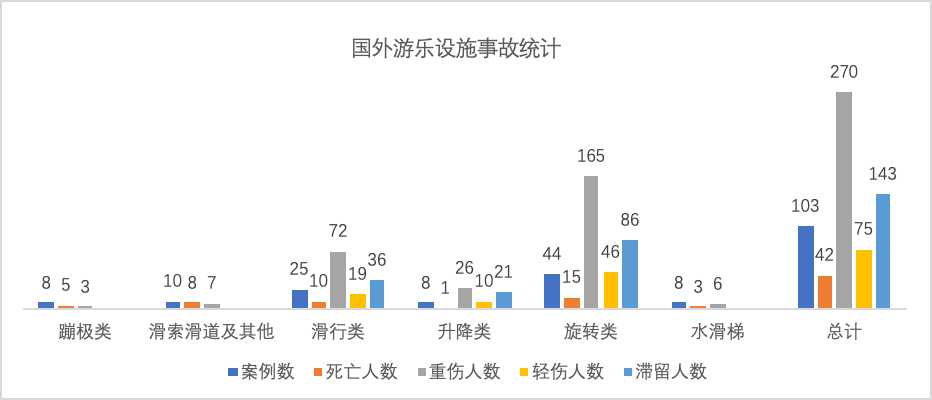
Figure 5 Statistics of Accidents of Different Types of Foreign Amusement Facilities from 2015 to 2021
2. Analysis of Causes of Accidents of Foreign Large-scale Amusement Facilities
The most common cause of accidents in rotating equipment is passengers falling from the cabin at high altitude. Passenger falls from the cabin are mainly caused by the failure of safety restraint devices and the tilting of open Ferris wheel cabins. Figure 6 shows the statistics of the causes of accidents of rotating equipment.
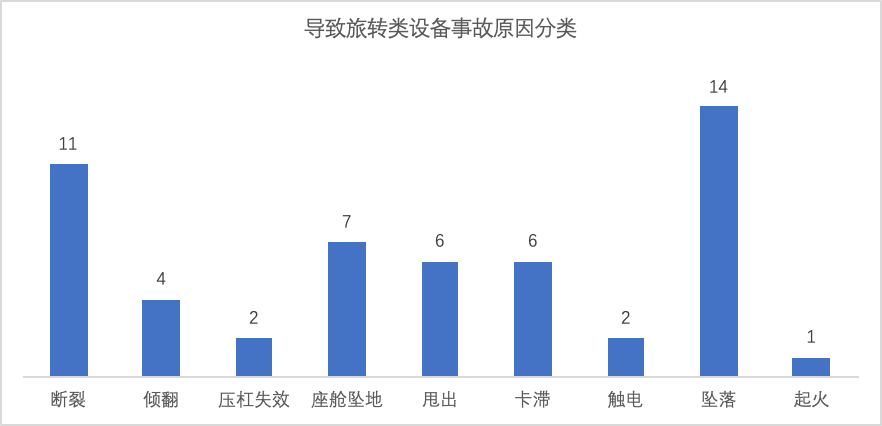
Figure 6 Statistics of Causes of Accidents of Rotating Equipment
The 2023 North America Fixed-Site Amusement Ride Safety Report, 2022 Update, analyzes amusement ride accident cases in the United States and Canada from 2003 to 2021. The report categorizes these accidents based on the severity of rider injuries, ride type, and accident phase. Of the 130 serious accidents, a high proportion occurred during the operation of the ride. The distribution of serious accidents in North America from 2003 to 2021, categorized by rider injury severity, ride type, and accident phase, is shown in Figure 7.
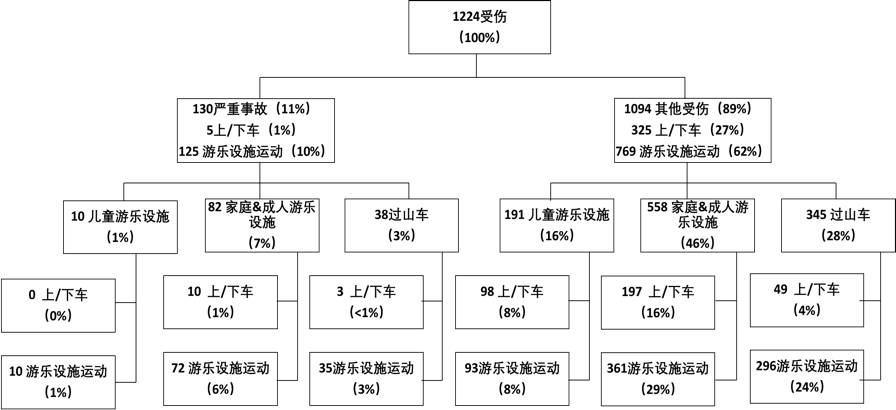
Figure 7: Distribution of Serious Accidents Involving Large Amusement Rides in North America, 2003-2021
From 2003 to 2021, the majority of injuries were caused by family and adult rides, followed by roller coasters, with the fewest injuries occurring on children's rides. Figure 8 shows the proportion of rider injuries by ride type in North America from 2003 to 2021.
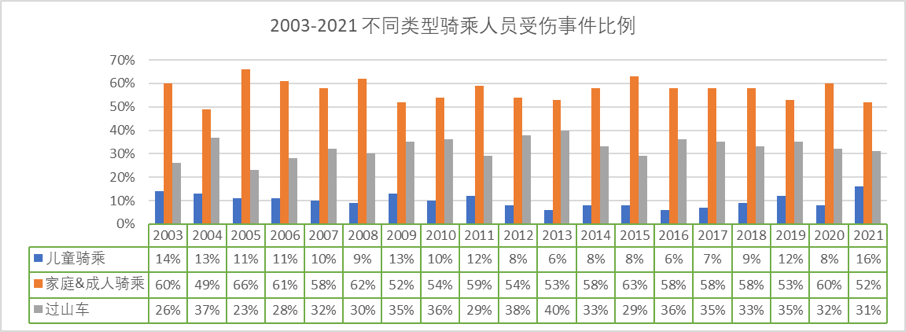
Figure 8: Proportion of Rider Injuries by Ride Type in North America, 2003-2021
From 2003 to 2022, the injury rate in North America was calculated as injuries per million visitors and injuries per million rides. While the injury rate per million visitors showed a gradual decline, the injury rate per million rides remained relatively stable. In 2022, 2.46 people per million visitors were injured (below the trend), and the injury rate per million rides was 0.73 (consistent with the trend). Figure 9 shows the injury rate statistics in North America from 2003 to 2022.
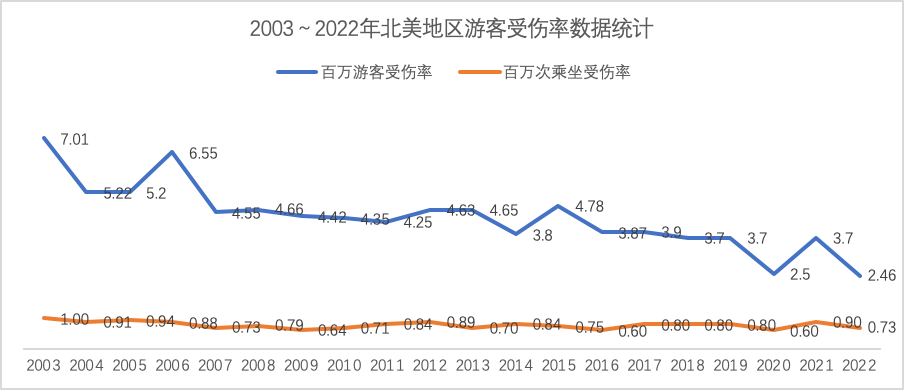
Figure 9: Injury Rate Statistics in North America, 2003-2022
The ERSR 2022 report included statistics on serious injuries per million rides in Europe (serious injury defined as requiring hospitalization for more than 24 hours). The overall rate fluctuated from 2012 to 2022, as shown in Figure 10.
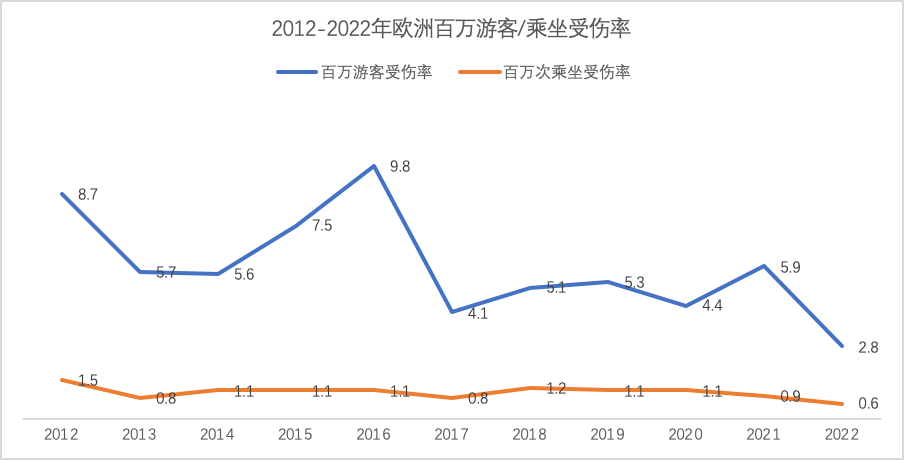
Figure 10: Injury Rate per Million Visitors/Rides in Europe, 2012-2022
Domestic and International Best Practices in Large Amusement Ride Safety Management
(1) Best Practices of Domestic Management Enterprises in Large Amusement Ride Safety Management
First, optimize the organizational structure and implement management systems. Implement a three-level management network that is networked, systematic, and standardized. Develop guiding management and technical documents such as amusement ride safety management systems, job responsibilities, and operating procedures; at the same time, strengthen the hierarchical management system, and implement safety responsibilities at all levels to various departments, teams, and positions, ensuring that those in charge are responsible and those operating are responsible.
Second, strengthen safety management to ensure safe operation. Strictly implement daily inspections, patrols, weekly inspections, monthly inspections, annual inspections, and preventive shutdown maintenance measures.
Third, improve the supervision of amusement ride safety operations. Each type of amusement ride has a corresponding safety management manual; contingency plans are developed for each amusement ride, and emergency rescue drills are required monthly, with regular emergency management training for relevant personnel.
Fourth, strengthen employee education and training. Use multiple methods and channels to disseminate knowledge about amusement ride safety, analyze domestic and international safety accident cases for safety warning education, strengthen the safety production awareness of employees, and enable amusement ride operators and maintenance personnel to understand how to prevent and mitigate potential safety risks of amusement rides, preventing accidents and further strengthening the foundation for the safe operation of amusement rides in theme parks.
Amusement ride safety management in domestic parks has made significant progress, but there is still a gap compared to internationally renowned theme parks and scenic areas. This includes aspects such as facility reliability, employee safety awareness, employee skills, investment in safety production, and systematic safety management.
(2) Best Practices of International Renowned Park Management Enterprises in Large Amusement Ride Safety Management
With the establishment of several internationally renowned theme parks in China, their amusement ride safety management has received considerable industry attention. Based on publicly available information and staff interviews, the following summarizes their best practices in safety management.
1. Design in Accordance with International Advanced Standards
The design of large amusement rides involves the participation of the headquarters design team. The design of large amusement rides operating in China complies with both international standards (such as ASTM) and domestic standards (such as GB8408). Inspection and testing institutions participate in the design, manufacturing, installation, and acceptance processes, including design document identification, type testing, and supervision inspection. The safety design standards of their large amusement rides are significantly higher than those of similar domestic products, and the designs include complete safety protection devices, such as braking devices, anti-collision, and anti-backflow devices.
2. Obtain Authorization for Self-Repair of Large Amusement Rides within the Park
Theme parks have obtained authorization for self-repair of large amusement rides within the park, improving the efficiency of park maintenance. The two theme parks' large amusement ride maintenance certificates (Y1 certificates) and large amusement ride operation certificates (Y2 certificates) can be issued independently, and they have established a complete self-certification management system, forming a complete system from training courses, training classrooms, training assessments, and personnel certificate management.
3. Strictly Adhere to the Preventive Maintenance Cycle as Required by the Product Maintenance Manual
Theme parks strictly adhere to the preventive maintenance cycle required by the product maintenance manual for large amusement rides, establishing daily, weekly, and monthly inspections through electronic information systems. It should be noted that spare parts for large amusement rides strictly use original parts. Even if components are intact but have reached the replacement cycle specified by the manufacturer, they will be replaced in time. This work involves significant investment and is a key factor in ensuring the safe operation of large amusement rides.
4. Conduct Multiple Test Runs and Corresponding Safety Inspections
After the theme park's amusement ride maintenance team completes normal maintenance at night, before putting the rides into operation the next day, technicians must conduct multiple test runs and corresponding safety inspections and record the inspection results; operators must conduct another test run before operation before allowing visitors to ride. During operation, pay attention to visitor dynamics (set observers), promptly identify unsafe visitor behavior and take corresponding measures (including emergency stops); strictly abide by the pre-conditions for operating large amusement rides in various weather conditions, and outdoor amusement rides must not operate under adverse weather conditions, such as strong winds, low temperatures, lightning, and heavy rain.
5. Sufficient Operating and Maintenance Personnel, Training Matrix for Each Position
Theme parks have sufficient operating and maintenance personnel for large amusement rides to ensure that each large amusement ride receives comprehensive maintenance for safe operation. An authorization mechanism is established for all operating and maintenance personnel, that is, a training matrix is established for each position, and only personnel who have completed the corresponding training and passed the assessment can take up their posts. Sufficient personnel allocation and strict personnel authorization are another important factor in ensuring the safety of large amusement rides.
6. Establish Effective Standard Operating Procedures (SOPs) and Provide Employee Training
Establish effective Standard Operating Procedures (SOPs) for the maintenance and operation of large amusement facilities, and provide employee training. Employees are only allowed to work after completing training and passing examinations. Annual audits assess SOP compliance, and there are penalties for employees who violate SOPs.
7. Develop detailed contingency plans and establish a professional rescue team in the park.
For potential high-altitude rescues involving large amusement facilities, detailed contingency plans should be developed. An annual emergency drill plan covering all large amusement facilities should be established, with regular drills to improve the emergency response capabilities of both employees and visitors, ensuring swift and effective rescue and self-rescue in the event of an accident. Simultaneously, establish a professional rescue team within the park. High-altitude rescue personnel should be certified by relevant organizations such as the Industrial Rope Access Trade Association (IRATA), and equipped with the necessary high-altitude rescue equipment to ensure timely high-altitude rescue in the event of an accident.
Outlook for the Safety Management of Large Amusement Facilities at Home and Abroad
The continued development of the cultural and tourism industry during the "14th Five-Year Plan" period. The "Outline of the 14th Five-Year Plan for National Economic and Social Development and the Long-Range Objectives Through the Year 2035" of the People's Republic of China proposes to promote the integrated development of culture and tourism. In the "Smart Tourism" section of the "Digital Application Scenarios" column, it is clearly stated that scenic areas, museums, etc., should be encouraged to develop online digital experience products, build scenic area monitoring facilities and big data platforms, and develop new cultural and tourism services such as immersive experiences, virtual exhibition halls, and high-definition live broadcasts. In 2024, the State Council issued the "Action Plan to Promote Large-Scale Equipment Renewal and the Trade-in of Consumer Goods," which proposes to "promote the upgrading of ropeways, amusement equipment, performing arts equipment, and other cultural and tourism equipment." Driven by relevant national policies, regulations, and standards, the amusement equipment industry is developing rapidly, showing new development trends.
First, large amusement facilities are developing towards the integration of "culture + technology." On the one hand, by continuously applying cutting-edge technologies in the industry, the organic integration of various motion elements is achieved; on the other hand, by deeply exploring the connotation of traditional culture, using culture as the core, and using digital technology, virtual reality technology, and internet technology to integrate traditional cultural elements into amusement projects, amusement facility manufacturers will transform into amusement experience manufacturers to meet new consumer needs and provide visitors with a better amusement experience.
Second, large amusement facilities will pay more attention to safety and high-quality development. In recent years, internationally renowned theme parks have entered the Chinese market, the industry has developed rapidly, and the country has successively promulgated stricter industry regulatory measures, putting forward higher requirements for the technology, craftsmanship, and safety performance of large amusement facility products, which will further promote the improvement of safety performance and high-quality development of large amusement facility equipment.
Third, large amusement facilities are developing towards intelligence. Currently, based on the operational needs of management units, intelligent technologies such as artificial intelligence, the Internet of Things, and big data analysis have been gradually applied to amusement facilities. In the future, large amusement facilities will be combined with various intelligent technologies to create immersive amusement experiences that combine education and entertainment. Internet of Things and big data analysis technologies will solve amusement park operation problems, improve amusement park operational efficiency, and further enrich the interactive experience and fun of amusement.
Fourth, large amusement facilities are developing towards diversification of target groups and application scenarios. With the advancement of technology and the continuous innovation of large amusement facilities, new business models have emerged, and amusement facilities will gradually break the boundaries of their original usage scenarios. Inheriting Chinese culture and telling Chinese stories, theme park projects with diverse types, distinctive characteristics, rich connotations, and popular with tourists will have better development opportunities. Large amusement facilities will show a trend of diversification of target groups and application scenarios, and public cultural facilities, urban theme parks, indoor theme parks, schools, science museums, museums, urban complexes, urban landmarks, and cultural and tourism scenic areas may become important application scenarios for large amusement facilities.
Recommended Important Cultural and Tourism Events
2025 China Parent-Child Tourism Innovation and Development Forum
June 12-13, Shanghai Jinshan Crowne Plaza Hotel

Key words:

